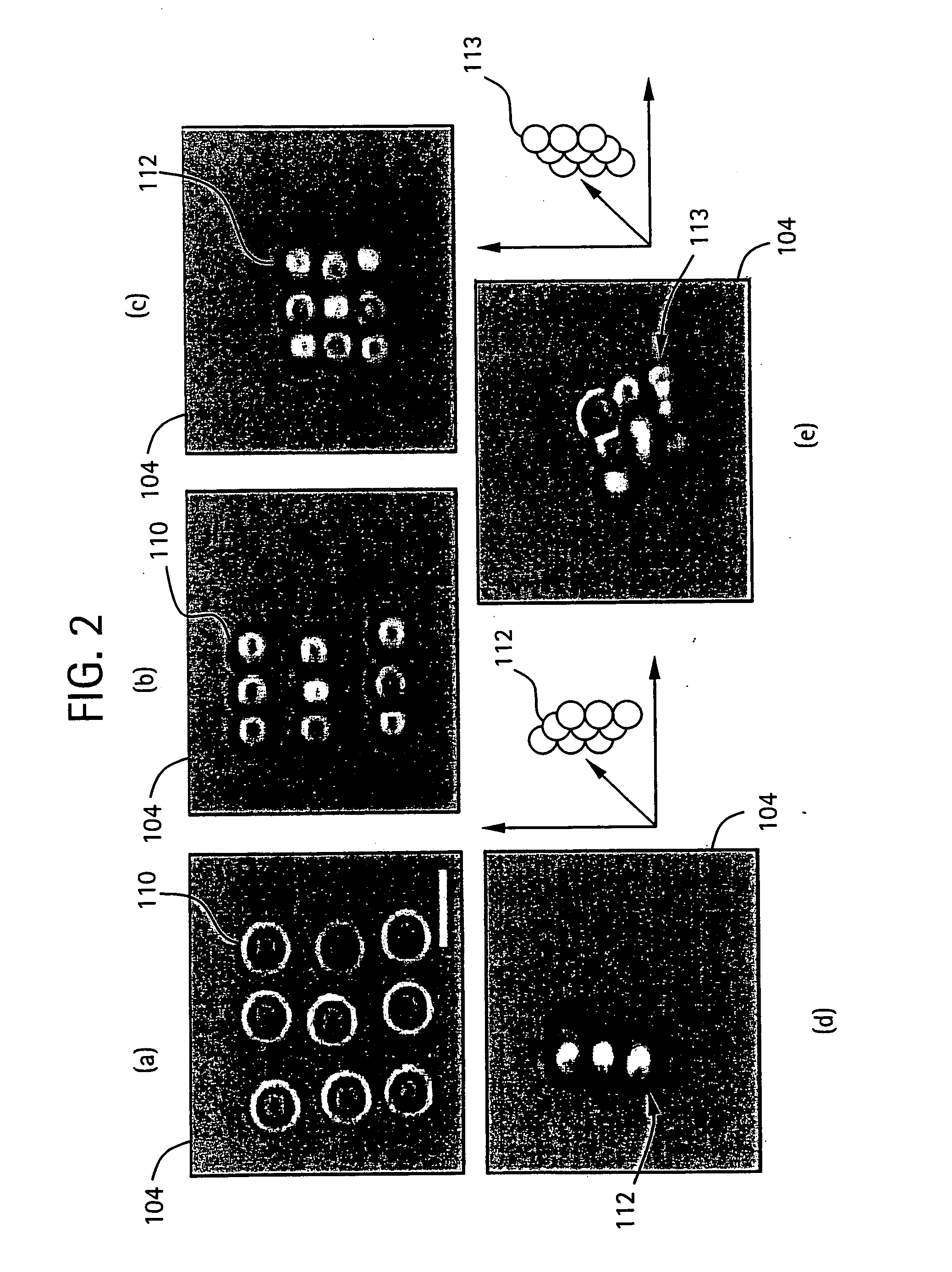Method and apparatus for forming multi-dimensional colloidal structures using holographic optical tweezers
a technology of optical tweezers and colloidal crystals, which is applied in the direction of fluid controllers, instruments, laboratory glassware, etc., can solve the problems of large-scale structures, lack of long-range defect-free structures, and difficulty in forming complex yet regular colloidal crystals composed of two or more colloid types with different diameters and/or compositions
- Summary
- Abstract
- Description
- Claims
- Application Information
AI Technical Summary
Benefits of technology
Problems solved by technology
Method used
Image
Examples
Embodiment Construction
[0045]The present invention relates to forming two and three dimensional structures on a substrate or in solution from charged stabilized colloidal particles using holographic optical trapping (HOT). HOT is described in U.S. Pat. No. 6,055,106 (Grier et al.), and in corresponding U.S. patent applications No. 10 / 735,395 (Gruber et al.), the contents of which are herein incorporated by reference in their entirety.
[0046]In the present invention, holographic optical traps are generated using a device such as the Arryx Bioryx 200™ system utilizing, for example, a 532 nm continuous wave laser (such as a Spectra Physics Millennia V) on an inverted microscope (such as a Nikon TE-200).
[0047]FIG. 1 is an illustration of the assembly sample cell 100 used in the present invention. A 60× high numerical aperture (n.a.=1.4) oil immersion objective, for example, was used in the HOT system 101. The flow cell 100 was created by affixing the input flow tube 102 and output flow tube 103 (for example, T...
PUM
 Login to View More
Login to View More Abstract
Description
Claims
Application Information
 Login to View More
Login to View More - R&D
- Intellectual Property
- Life Sciences
- Materials
- Tech Scout
- Unparalleled Data Quality
- Higher Quality Content
- 60% Fewer Hallucinations
Browse by: Latest US Patents, China's latest patents, Technical Efficacy Thesaurus, Application Domain, Technology Topic, Popular Technical Reports.
© 2025 PatSnap. All rights reserved.Legal|Privacy policy|Modern Slavery Act Transparency Statement|Sitemap|About US| Contact US: help@patsnap.com



